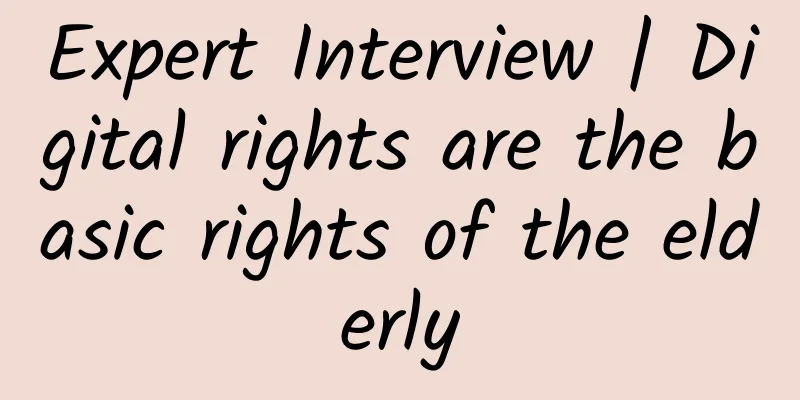User operations, how to solve user pain points?

|
When considering user needs, we look at the product from the user's perspective and identify needs that address user pain points. However, in this process, we will encounter the problem of incomplete demand design, and the author believes that the use of the PFD model can effectively solve this problem. Start from the user's perspective and create value for users. It is the bible for us product people. No matter what product we are making, this sentence will always accompany us. In our daily work, we start from the user's perspective, tell user stories, and build user portraits, which are then applied in product design. But sometimes, I wonder if something is missing or if I haven’t thought it through comprehensively enough, which results in the designed product failing to meet user needs or providing a poor user experience. I have been caught in this kind of uncertainty before. In the early stages of preparation, it is impossible to quickly expand the user perspective and identify the user's pain points. Recently, I learned the PFD model for cultivating user perspective. This model provided me with great help in the early preparation process of product design, and I would like to share it with you. 1. PFD Model Image source: "Mr. L said" The left half of the above picture uses our human body to describe the relevant events that we need to understand.
What did you hear and what influence did you have? The main focus here is on the passive impacts that users may be exposed to: it may be a pop-up window, a sound, some smells, etc. Will the ongoing behavior be interrupted? How to help users continue the original behavior after the interruption?
What will you see and what will the users actively pay attention to? Emphasize initiative.
Who will you communicate with and what will you communicate about? The main focus here is on the connections between users, the connections within user groups, and the connections between user groups. What is the content of their communication? What facilitates communication between them. What problems may arise during the communication process?
What behavior occurs and what is done? The emphasis here is on user behavior, not just the operating behavior on the mobile phone screen, but also his offline behavior. This will help us build the entire scene better and give users a more immersive experience.
What is the inner driving force? I think this is the most difficult part. We need to explore it with our heart, and we also need to learn relevant methods or tools to find the driving force behind users to do this. Maslow's hierarchy of needs is one of the more applicable research methods at present. I will not elaborate on it here. Those who are interested can learn about it on their own.
How does he want others to see him? What is the image that users present to the outside world? For example, Douban users may prefer literary and artistic styles, Bilibili users may prefer the second dimension, and so on. Can we create the external image that our target users desire?
What is his role at this time? What position you stand on. Here we focus more on the role of users, proportion of content communities, and what is the role positioning of top influencers? What is their perspective on the issue? What about ordinary users? Based on the above tips, when investigating user needs, we observe what the target group thinks, what they do, what they hear, and what they see. Then, based on the previous observations and reflections, we distilled what problems our users had in this process, how they felt, and what hopes were aroused. These are the user needs that we can try to respond to and create value for users. 2. Application Examples Suppose we are a content product for professionals. Users will use our product on their way to work, and we use the PFD model to analyze what problems users will encounter. Scene: On the subway on the way to work Office worker (foot) Xiao Wang (user) holds the handle with one hand and a mobile phone (hand) in the other. From time to time, noisy sounds can be heard from the subway. In this environment, it is necessary to pay attention to the station announcement information to avoid missing the stop (ear). At this time, I am browsing the content on our products and basically not communicating with others (oral). He mainly pays attention to current affairs news and content related to career development (eyes), and hopes to become a successful person (clothes). Next, we analyze based on the PFD model and we will find that:
… These are all points we can explore. Of course, this doesn’t mean that we can find all the pain points of users in this way, but sometimes when we are in trouble, having a guide to think about it may trigger something different. On the other hand, this model uses parts of our body to guide our thinking, which makes it easy to remember and use when we need it. The above is all. I hope you will gain something after reading it. Related reading: 1. User operation: new funnel model for conversion analysis! 2. User operation: How to use B-side operation thinking to increase user growth? 3. Product operation: How to use data analysis to drive product user growth? 4. APP user growth: One model solves 90% of growth problems! 5.How to increase users? Take Pinduoduo and Xiaohongshu as examples 6. Triggering user growth: Is user operation just about attracting new users? 7. User operation: What else can you do to attract new users without fission users? 8. User operation: how can financial products awaken dormant users? 9. User Operation | How to perform user behavior path analysis? Author: Bin Source: YouGeSiXiang |
<<: Bidding Promotion | How to reduce costs and increase clicks?
Recommend
Douyin is a small business with zero threshold to make money with a daily income of 600+. All you need is hands!
Did you know? Emojis can not only be used for pic...
Research shows that if a dog tilts its head, its IQ is not a problem!
Editor: Qizai Editor: Li Xuewei Layout: Li Xuewei...
Baijiahao operation skills, teach you how to quickly pass the novice period?
Baijiahao operation skills. Baijiahao has a novic...
A must-read for mid to high-level operators! How to build a product operation system based on business logic?
Special reminder: This article is a long logical ...
Overglaze vs. Underglaze: The Art and Safety of Tableware Selection!
Audit expert: Peng Guoqiu Deputy Chief Physician,...
Geely's net profit in the first half of the year was 6.6 billion yuan, a 54% increase from the same period last year
On August 22, Geely Automobile released its finan...
China's "proud" mobile payment: collectively rejected by developed countries! Why?
In the early 1990s, the Internet began to be offi...
Xigua Video product analysis report!
As a product of Toutiao, Xigua Video has been aro...
Homemade wine tastes great, naturally pure? But I urge you to be careful...
It is the grape harvest season again. Many people...
It is reported that NIO is considering more layoffs: some departments may lay off up to 30% of employees
Some international expansion plans, including ent...
How to start with data analysis to carry out SEM bidding promotion?
SEM is the abbreviation of Search Engine Marketin...
What are some page ranking factors that are not related to keywords?
Page ranking factors that are not related to keyw...
Analysis of Kuaishou information flow advertising and advertising optimization tips!
A complete analysis of the Kuaishou information f...
World Soil Day | Why is our soil turning white?
December 5 World Soil Day This year's theme i...









